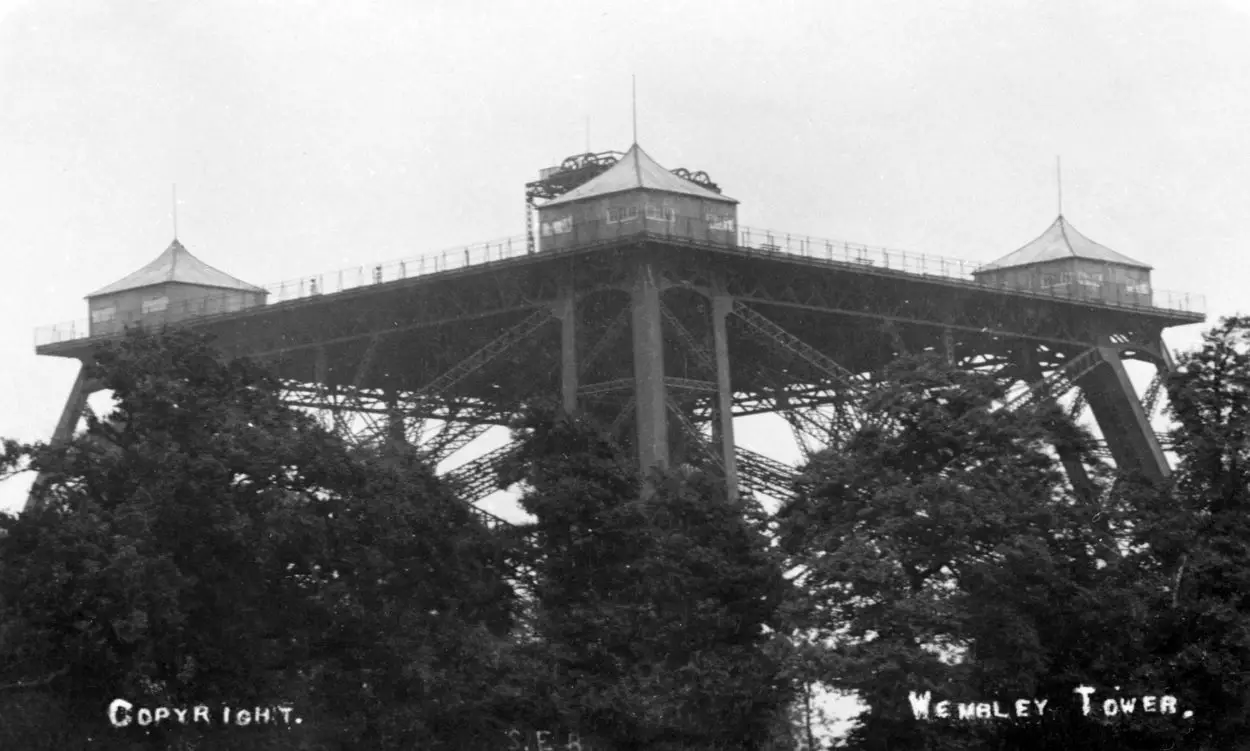In 1891, construction began on the “Great Tower of London”, also known as Watkin’s Tower, at the site of present-day Wembley Stadium in what was the rural Middlesex hamlet called Wembley.
The tower was the brainchild of Sir Edward William Watkin, 1st Baronet, a railway entrepreneur who envisioned creating an attraction to rival that of the Eiffel Tower, but surpassing the latter in size to achieve the title of the world’s tallest building.
Watkin was an ambitious visionary, having undertaken many large-scale railway engineering projects, including the Great Central Main Line, and the failed 1881 Anglo-French Submarine Railway Company’s channel tunnel project to connect his railway empire to the French rail network.
The success of the Eiffel Tower, nicknamed “La dame de fer” (French for “Iron Lady”), which was constructed from 1887 to 1889 by engineer, Gustave Eiffel, led to Watkin proposing his own tower that would entice Londoners onto his trains to visit the attraction.

Watkin approached Gustave Eiffel to design his tower, but the Frenchman declined, so he launched an architectural competition in 1890 that received 68 designs for consideration.
Some of the proposals included a tower inspired by the Leaning Tower of Pisa, a tower with a spiral railway climbing its exterior, and a 1/12-scale model of the Great Pyramid of Giza. The winning entry was submitted by MacLaren, William Dunn and engineer AD Stewart, consisting of an eight-legged 366m tall metal tower – 45.8 metres taller than the Eiffel Tower.
The design had two observation decks containing restaurants, theatres, dancing rooms, exhibition halls, Turkish baths, and a hotel with a capacity of 90 rooms. The top of the tower was reached by a system of lifts, leading to viewing platforms, an astronomical observatory, and a fresh-air sanatorium.

The surrounding amusement park was laid out with boating lakes, a waterfall, lush ornamental gardens, cricket and football pitches, and numerous public attractions and restaurants.
Watkin formed the International Tower Construction Company to oversee construction, but after a public subscription failed to attract investors, the project commissioned a scaled back variation on the design that resembled the Eiffel Tower.
The foundations were laid in 1892 and construction work commenced in June 1893. By September 1895, the first stage of the tower was completed reaching a height of 47 metres and was opened to the public in 1896.
Over 100,000 people visited the park in the second quarter of 1894, though this declined to 120,000 for the whole of 1895 and only 100,000 for 1896. Despite an initial burst of popularity, the tower failed to draw large crowds. Of the 100,000 visitors to the park in 1896, less than a fifth paid to go up the Tower.
It was later discovered that the foundations of the tower were unsteady causing subsidence in the marshy soil. The project was further hampered after Watkin suffered a stroke and retired from the chairmanship of the Metropolitan, subsequently leading to the International Tower Construction Company filing for voluntary liquidation in 1899.
In 1902, the tower, now known as “Watkin’s Folly”, was declared unsafe and closed to the public. Over the next two years, the structure was dismantled, and the foundations were demolished using dynamite.
Although the tower was a failure, the development of Wembley Park as a recreation venue remained a popular attraction, and the Tower Construction Company recouped its losses re-incorporated as the Wembley Park Estate Company in 1906, laying out the Wembley suburb where the famous Wembley Stadium (originally known as the “British Empire Exhibition Stadium” or simply the “Empire Stadium”), would be constructed on the site of the former tower and opened in 1923.
The story of Watkin’s Tower was described by the then Poet Laureate, Sir John Betjeman, who said: “Beyond Neasden there was an unimportant hamlet where for years the Metropolitan didn’t stop. Wembley. Slushy fields and grass farms. Then out of the mist arose Sir Edward Watkin’s dream: an Eiffel Tower for London.”
Header Image Credit : Alamy





